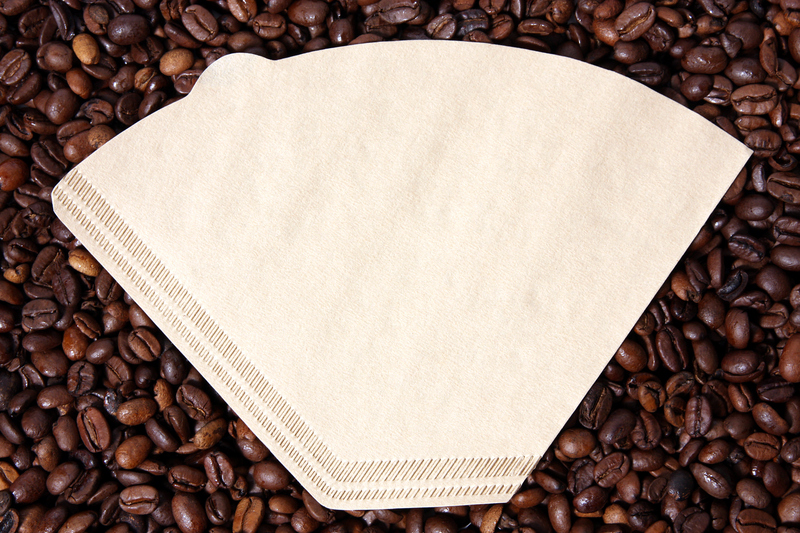Your Guide to a Sparkling Clean Burnt Stovetop
Posted on 06/10/2025
Your Guide to a Sparkling Clean Burnt Stovetop
If you cook at home frequently, a burnt stovetop may be an all-too-familiar sight. Accidental spills, boil-overs, and charred residues are unavoidable parts of kitchen life. However, a sparkling clean stovetop doesn't just look great--it also helps maintain your appliance and ensure safe, efficient cooking. In this comprehensive guide, we will explore numerous methods on how to clean burnt stovetops, use effective cleaning products, offer maintenance tips, and share tricks to restore even the most stubbornly stained surfaces. Whether your appliance is electric, gas, or glass, learn how to reclaim shine and cleanliness with ease!

Why Is a Clean Stovetop Important?
- Longevity: Keeping your stovetop clean preserves its appearance and functionality, preventing wear and tear due to burnt-on food and grime.
- Safety: Grease and burnt food particles are fire hazards. Ensuring a clean surface minimizes accident risks.
- Improved Cooking: Clean burners and surfaces distribute heat evenly, ensuring your food cooks properly.
- Hygiene: Regular cleaning prevents bacteria buildup caused by food debris and spills.
Identifying Your Stovetop Type
Before diving into burnt stove top cleaning solutions, it's crucial to identify your stovetop type as each requires specific care:
- Gas Stovetops: Feature removable burners and grates which can be cleaned separately.
- Electric Coil Stovetops: Use coiled heating elements. Coils can often be lifted or removed for cleaning.
- Glass or Ceramic Stovetops: Flat, smooth surfaces that demand gentle yet effective cleaning agents.
Pro tip:
Always check your appliance manual for recommended cleaning instructions, especially if you're dealing with specialty finishes or brands.
Common Causes of Burnt Stovetops
- Spills: Boil-overs from soups, sauces, or sugary liquids can create tough, burnt stains if not wiped up immediately.
- Grease Splatter: Frying foods often sends oil droplets onto your surface, which accumulate and burn with each cooking session.
- Neglected Cleanup: Routine neglect allows residues to carbonize, becoming hard and difficult to remove.
Essential Supplies for Cleaning a Burnt Stovetop
Gather these must-have supplies to ensure a comprehensive clean:
- Baking soda - an excellent non-abrasive scrubbing agent
- White vinegar - for dissolving mineral and burnt residues
- Dish soap - removes grease and grime
- Non-scratch scrubbing pads or sponges
- Razor blade scraper - only for glass and ceramic tops, used with care
- Microfiber cloths
- Rubber gloves - to protect your hands
- Warm water
Step-by-Step Guide: How to Clean a Burnt Stovetop
1. Preparation and Safety First
- Turn off and unplug: Make sure all knobs are off. For electric ranges, unplug if possible.
- Allow to cool: Cleaning a hot stovetop can cause burns and make cleaning solutions less effective.
- Remove parts: Take off grates, burners, and knobs for separate cleaning, if applicable.
2. Cleaning Burnt Residues on Gas Stovetops
- Soak Removable Parts: Soak grates and burner caps in a sink of hot, soapy water for at least 20 minutes.
- Apply Baking Soda Paste: Mix a 1:1 ratio of baking soda and water. Spread the paste over burnt areas and let sit for 10-15 minutes.
- Scrub and Rinse: Use a non-abrasive scrubbing pad or an old toothbrush to work away burnt-on food. Rinse thoroughly.
- For Tough Stains: Sprinkle extra baking soda, spray with a bit of vinegar, and let fizz before scrubbing.
- Finish with a Wipe Down: Use a damp microfiber cloth to remove any paste residue.
3. Cleaning a Burnt Glass or Ceramic Stovetop
- Prepare a Vinegar Spray: Fill a spray bottle with 1 part white vinegar to 1 part water.
- Spray and Wipe: Mist the surface and wipe down with a microfiber cloth to remove grease and loose debris.
- Baking Soda Method: Sprinkle baking soda liberally over burnt spots. Cover with a damp towel and let sit for 15 minutes.
- Gently Rub: Use a damp sponge to massage the area until residue loosens.
- Use a Razor Blade Scraper: For hardened spots, hold the blade at a 45-degree angle and carefully scrape without scratching.
- Buff to Shine: Rinse and dry with a clean microfiber cloth for a sparkling clean finish.
Note:
Avoid steel wool or overly abrasive pads, which can scratch both glass and metal stovetops.
4. Cleaning Electric Coil Burners
- Remove Coils: If possible, unplug and carefully lift out the coils.
- Wipe with Damp Cloth: Never submerge coils. Clean with a well-wrung damp cloth and mild dish soap.
- Clean Drip Pans: Remove and soak pans in hot, soapy water. Scrub burnt spots with baking soda paste, rinse and dry.
5. Finishing Touches
- Replace parts: Once everything is dry, reassemble grates, burners, or coils.
- Polish: For glass or ceramic stovetops, use a stove-top polishing cream for a gleaming finish.
- Disinfect: Wipe knobs and handles with disinfectant spray or wipes.
Eco-Friendly and Homemade Stovetop Cleaner Solutions
For many households, DIY cleaners prove just as powerful as commercial products. These natural stovetop cleaning solutions are safe, affordable, and reduce chemical exposure.
-
Baking Soda & Vinegar:
Sprinkle baking soda generously over burnt spots, spray with vinegar until it bubbles, wait, then scrub gently. -
Lemon Juice & Salt:
For light burnt stains, mix lemon juice and salt to form a paste. The citric acid lifts stains, while salt acts as a gentle abrasive. -
Hydrogen Peroxide & Baking Soda:
Apply hydrogen peroxide to stubborn burnt-on foods, sprinkle baking soda on top, let sit for 10 minutes, then scrub and rinse.
Tackling Really Stubborn Burnt Stains
Sometimes, a stovetop has years of burnt food build-up that regular scrubbing just won't remove. Here are advanced tactics for ultra-tough jobs:
- Soak Overnight: Cover burnt areas with a thick baking soda paste, lay a damp towel over them, and leave overnight before scrubbing.
- Commercial Cream Cleaners: Look for products labeled safe for your surface type. Brands like Bar Keepers Friend and Cerama Bryte are favorites for glass and ceramic.
- Magic Eraser Sponges: Gently remove tough stains on glass tops, but be careful not to overuse on delicate finishes.
- Steam Cleaning: For really old grime, use a handheld steam cleaner to soften burnt-on residues before wiping them away.
Always test a small, inconspicuous area before applying any new cleaner to your entire stovetop.
Maintenance Tips for a Spotless Stovetop
- Wipe After Every Use: A quick swipe with a damp cloth after each cooking session prevents residues from building up.
- Use Burner Liners: Disposable or reusable liners under burners catch overflow, making cleaning effortless.
- Address Spills Immediately: Clean up any spills or boil-overs as soon as it's safe to touch the stove.
- Deep Clean Weekly: Even if it looks clean, a weekly thorough scrub keeps stubborn stains at bay.
- Check Gas Jets and Burners: Inspect regularly for blockages to ensure optimal performance.
Frequently Asked Questions About Cleaning Burnt Stovetops
Can I use oven cleaner on my stovetop?
It's not recommended, especially for glass, ceramic, or painted metal surfaces, as oven cleaners can be overly harsh and may discolor or damage the finish.
How do I prevent future burnt stains?
- Use spill guards: Place guards or liners on your stovetop to catch drip-overs.
- Keep watch while cooking: Don't walk away from simmering pots.
- Clean spills quickly: Address accidents as soon as possible to prevent them from baking on.
Are harsh chemical cleaners necessary?
No, most burnt stove tops can be cleaned effectively with everyday items like baking soda, vinegar, and dish soap, which are safer for your health and better for the environment.
Should I use grease-cutting sprays?
Grease-cutting sprays can help with oil-based residues but be careful to choose brands that are safe for your specific surface.

Key Takeaways for a Sparkling Clean Burnt Stovetop
- Identify your stovetop type to use the safest and most effective cleaning methods.
- Baking soda, vinegar, and dish soap are powerful, safe, and affordable cleaning agents.
- Routine cleaning prevents buildup, eases maintenance, and extends the life of your appliance.
- Don't let stubborn stains intimidate you--overnight soaks, scrapers, and specialized products can conquer even the toughest grime!
Final Thoughts: Enjoy a Gleaming, Burnt-Free Stovetop
A sparkling clean burnt stovetop is achievable with the right approach, patience, and a little elbow grease. Regular maintenance paired with effective deep cleaning ensures your kitchen's centerpiece remains attractive and functions at its best. Remember, the more quickly you address spills and burnt-on food, the easier your future cleaning sessions will be. Happy cleaning, and may your stovetop always shine bright!




